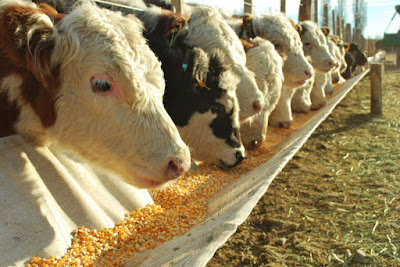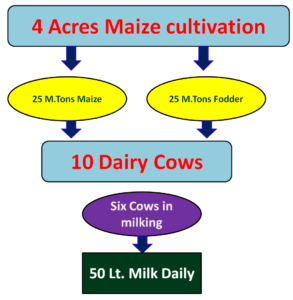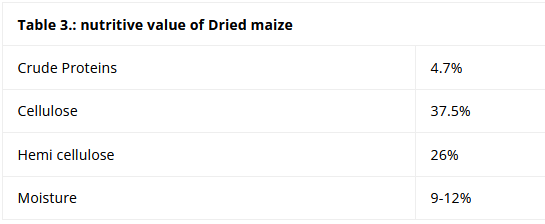Maize Stover as a good alternative in animal nutrition
The basis of milk is fodder, the dairy industry without fodder is not profitable so there should be opportunities to explore alternative ways and make it economical. The construction of new roads and rail and real estate on another way will reduce much of the cultivable land. At present, farmers are increasingly interested in growing commercial crops like Maize and Cotton. |
| Feeding Maize Stover in dairy cows |
 |
| Incredible benefits of maize |
Livestock fodder can be divided into three types:
1. Green fodder
2. Dry fodder
3. Concentrate feeds
The Requirement of Green fodder for cattle is about 30- 40 Kgs. per day, available through agricultural-based products. “Maize” is one of the most important cereal crops, and staple food for humans as well as domestic animals. In Western countries such as the United States, corn is 35 percent cultivated, making it the “economic driver” of the United States. It is the most diverse and versatile growing crop. Maize is the third most widely grown crop worldwide. Especially maize, baby corn and sweet corn are the major crops. Baby corn and sweet corn can be used as cornmeal and then the rest of the plant can be used as fodder completely. It is very good for digestion in cattle and can be used as fodder.
Harvesting of Maize Stover
Maize is used in 52% of poultry feed, 24% of the food we eat, and 11% of livestock feed.
 |
| Nutritive values of different fodders |
 |
| Nutritive value of different parts of maize |
Numerous researches have shown that maize has high nutritional value as compared to other grasses. Similarly, corn leaves are high in protein (13.4%) and low in fiber than the stem portion of the Maize as indicated in Table No. 2. The small and marginal farmers harvest corn, just freshly given as green succulent. It is also beneficial to use it a dry fodder, it is completely dried, and also urea treated fodder. Maize can also be used as silage.
Silage Preparation – Requirement:
The idea is to provide nutritious feed with highly nutritious throughout the year. During November and December, the growth of regular green fodders has stunted growth due to cold and snow, as well as the availability of water decreases during the summer season due to water turbulence from May to June. This approach is very much needed at times like this. Silage can also be made from sorghum husk. The optimum moisture content should be 70% for making silage from maize Stover, the moisture content of maize Stover is low and the quality of silage is good. |
| Nutritive value of dried maize |
